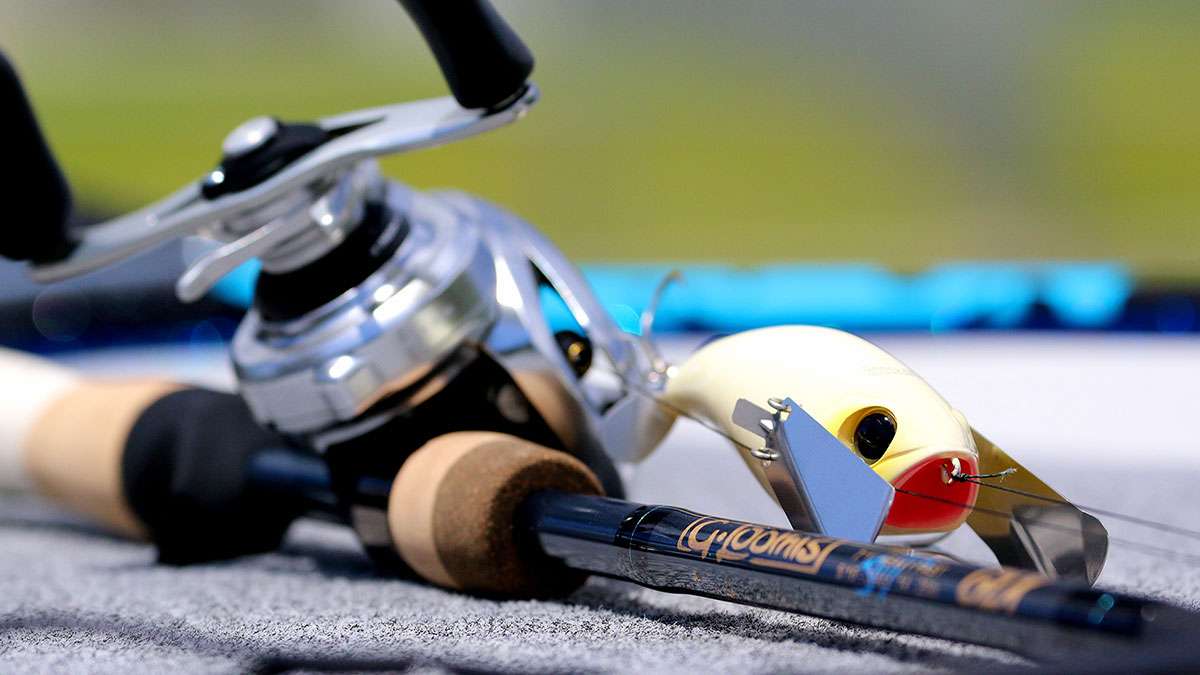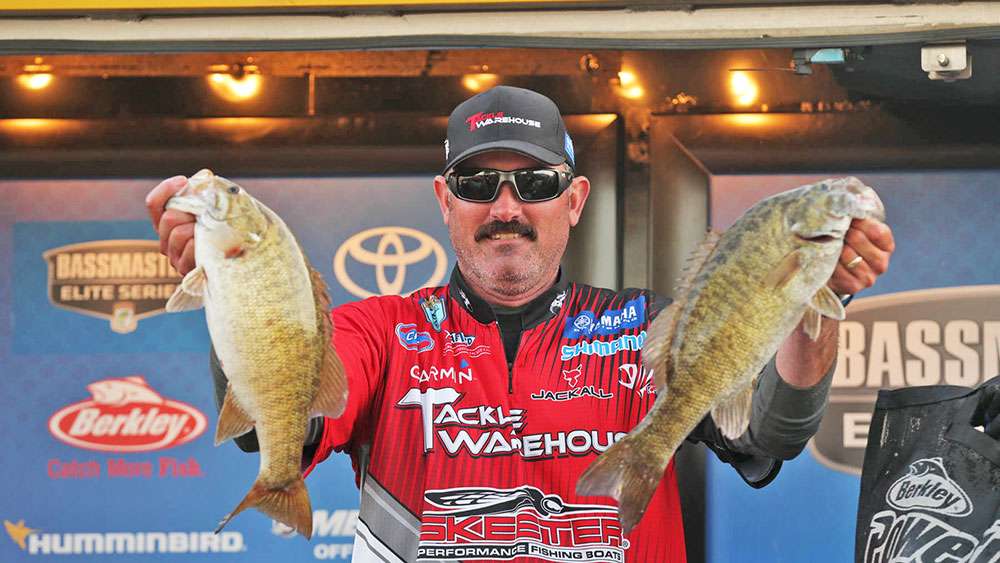
In between the thrill of the spawn and the predictability of summer’s offshore fish, there’s a period when bass are first recovering, then starting to feed again. Some anglers dread it, referring to it as the “postspawn funk.” California pro Jared Lintner thinks differently – he knows that it’s the best surface bite of the year.
“When I start to see balls of fry, that’s topwater time,” he said. He’s not afraid to throw a Jackall Firecracker or an attention-grabbing Jackall Pompadour for big prespawn females, and he uses them methodically to tempt bedding bass he can’t see, but the postspawn is when it’s at its best. In addition to bass guarding fry, there are usually bedding bluegills and a shad spawn to give away the goods.
It’s an exciting bite, to be sure, but it can also be one of the most frustrating. Use the wrong bait, the improper rod, reel or line, and you’re asking for these mean-spirited fish to abuse you. For that reason, Lintner tailors each element of his system to the conditions at hand.
“If it’s flat, slick, calm conditions, when even a big walking bait is too much, too loud, too fast, I’ll start with a Ghost Minnow Jackall SK Pop,” he said. “They’re feeding up, but they’ve been beat on and this is more of a finesse approach.”
When it’s breezier, or in low light conditions, he relies on the Pompadour, which moves about as much water as an ocean freighter with its wide body, tail propeller and dual metal wings that make it sashay side to side. “I let the wind and the time of day dictate my retrieve with it, but this time of year bass are keyed in on prey that’s shaped like the Pompadour. Bluegills make bass mad so my favorite color is IS Gill Bone, but in off-color water I might go with Black Bone or Bone White.”
The third primary tool in his system is the Iobee Frog, which he reserves primarily, but not exclusively, for heavier cover such as grass and reeds, or under overhanging bushes – in other words, places where a treble-hooked lure would get hung up repeatedly. Once again, noting the natural enemy of the bass, he leans toward the ultra-natural bluegill color pattern.
That’s what’s on the end of his line, with all three often getting a workout in a single day as conditions change. While a good recipe for eliciting strikes, without the proper tackle to accompany them those strikes won’t translate into fish in the livewell.
“You need to have the right rod for each of them,” he explained. “Too light or too heavy and you can’t place the lure properly.” For example, with the Iobee, he often needs substantial backbone to winch fish out of matted grass, but if he tries to throw it on his flipping stick, his placement will be off. He prefers a G. Loomis NRX 894, a 7-foot, 5-inch beast that has the appropriate amount of backbone, but also “a real quick tip so I can twitch that frog next to a bush for as long as I want.”

He also likes a G. Loomis 894 for the Pompadour, which weighs a hefty 3/4-ounce, and might overpower lighter rods, but in this case he opts for the GLX Series, which “has enough power to get them out, but still enables me to put that thing on a dime.”
While a 7-foot, 5-inch rod may be perfect for the lanky Lintner, anglers who aren’t as tall might want to opt for the same action in a slightly shorter stick. Fortunately, he added, bass seem to get all of the Pompadour, so the real issue is getting them in the boat, not getting them hooked. “I’ve never seen a bait they eat as good as that one. In three years of fishing it, I might’ve lost only one or two bass.”
While his rod choice is important for presenting the Iobee and the Pompadour, it may be even more crucial with the SK Pop.
“You have to be able to cast the lure, but with those small trebles you don’t want to tear the hooks out,” Lintner said. “It’s like a crankbait situation, but not. I’ve tried glass rods, but I don’t like them for this purpose.”
Instead, he dotes on two lighter models from the GLX lineup – the 892 if he’s fishing mostly open water, and the 893 if he’s likely to bring the popper around and over gnarly bushes and laydowns.
He’s a huge fan of the Shimano Metanium baitcasting reels, but employs a different model and a different gear ratio for each of these three baits. With the SK Pop, he prefers the 6.2:1 MGL.
“You’re working the bait a lot slower, and the slower gear ratio helps me slow myself down,” he said. With the Pompadour, which he’s usually winding steadily, he prefers the Metanium HG’s 7.4:1 rate of retrieve. He ups the speed even further when it comes to the frog, opting for the 8.5:1 version.
“When you set the hook on a frog, they’re just crazy fish. They don’t fight like any other fish I’ve caught. Those Metaniums are so smooth and light and they have no problems with the drag.” With the Magnumlite Spool, he can cast further than the competition, whether the goal is to present the SK Pop to skittish fry-guarders, cover water with the Pompadour or skip the Iobee into places where the sun doesn’t shine. At just 6.2 ounces apiece, they allow him to fish hard all day without fatigue, and he especially likes the longer handles on the HG and XG models, the better to hang on when a mean-spirited postspawn bass tries to rip the rod out of his arms.

